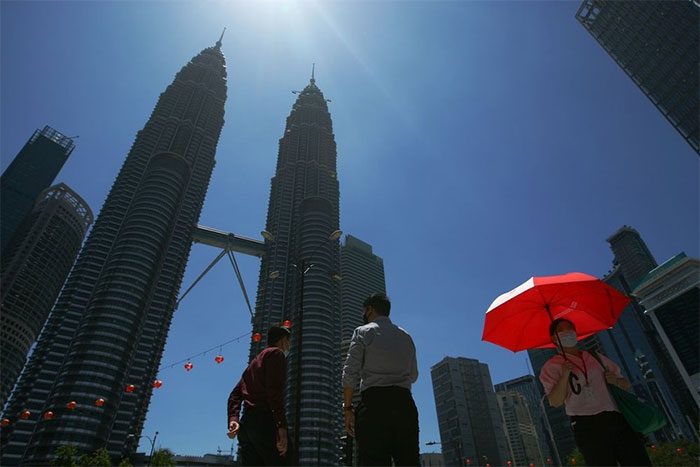The heat wave that began in April continues to wreak havoc across Southeast Asia, with increasing severity threatening both production activities and the health of the population.
According to Bloomberg, Southeast Asian countries continue to face scorching weather conditions with record-high temperatures, leading to many people in various areas suffering from heatstroke and other health issues.

Many countries in Southeast Asia continue to face dry weather and record-high temperatures. (Photo: Reuters).
The National Environment Agency of Singapore reported the highest temperature recorded in the country in the past 40 years at 37 degrees Celsius on May 13, also forecasting that the heat and dry weather conditions will persist in the coming days. Previously, Singapore’s record temperature was noted in May 2022 at 36.7 degrees Celsius.
Increasing Incidents of Heatstroke and Heat-Related Seizures
In Malaysia, the Ministry of Health has recorded 14 cases of heatstroke as of May 12. In a statement to reporters on May 13, Deputy Minister of Health Lukanisman Awang indicated that the Malaysian authorities anticipate that the number of heatstroke cases will rise in the coming time due to heatwaves that could last until August.
“The situation is still under control of healthcare facilities,” Lukanisman stated. “The Ministry of Health’s facilities and hospitals are preparing to handle victims of heatstroke and heat-related seizures.”
Recently, Malaysia reported a child’s death due to heatstroke, prompting the country’s health authorities to issue a public heat warning.

A woman in Malaysia cooked eggs on a pan outdoors in the heat on May 12. (Photo: FATASHA NADIA/FACEBOOK).
According to NBC, extreme heat, combined with low air quality in some countries like Thailand, is considered capable of causing severe respiratory and cardiovascular issues. Such cases are expected to increase as climate change worsens.
“When you have both high temperatures and low air quality, their overall impact on human health is greater than each factor alone,” said Erika Garcia, an environmental epidemiologist at the Keck School of Medicine, University of Southern California.
Severe Damages from Heatwaves
With scientists predicting that 2023 will be a year of extreme heat, signs of overload have appeared throughout Asia as the first heatwaves from April continue to sweep across the region.
Moreover, the severity of heatwaves is showing signs of worsening due to the increase of greenhouse gases in the atmosphere.
In early May, Vietnam recorded a record temperature of 44.2 degrees Celsius. Meanwhile, the Philippines was forced to reduce the operating hours of educational institutions after the heat index reached a “dangerous” level.

The recent extreme heat in Southeast Asia could pose serious health issues for the population. (Photo: Star).
Concerns about the decline in palm oil production due to severe heat have prompted investor anxiety. Southeast Asia supplies a significant portion of the world’s palm oil. The Thai Permanent Trade, Industry, and Banking Committee warns that droughts stemming from the El Niño phenomenon later this year could lead to a sharp increase in food prices.
With climate change and shifting weather patterns influenced by the El Niño phenomenon, heatwaves and severe storms are expected to occur more frequently with increasing severity.
Myanmar and Bangladesh have evacuated approximately 400,000 people to prevent heavy casualties as Cyclone Mocha—one of the strongest storms in recent years—makes landfall in the region.
With wind speeds reaching up to 210 km/h, Cyclone Mocha is predicted to cause significant property damage in one of the most vulnerable areas in the world.




















































